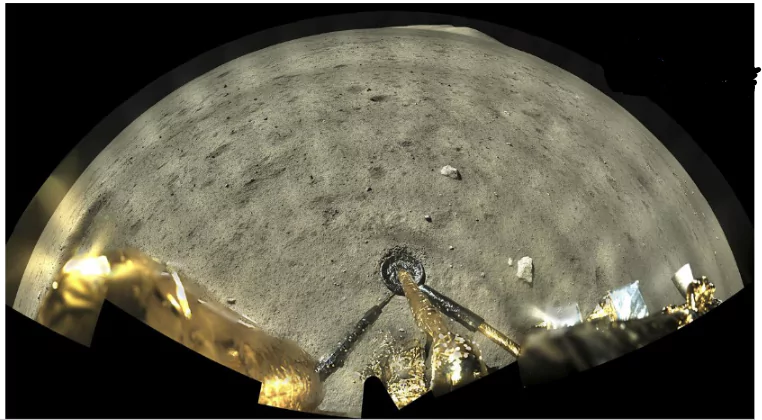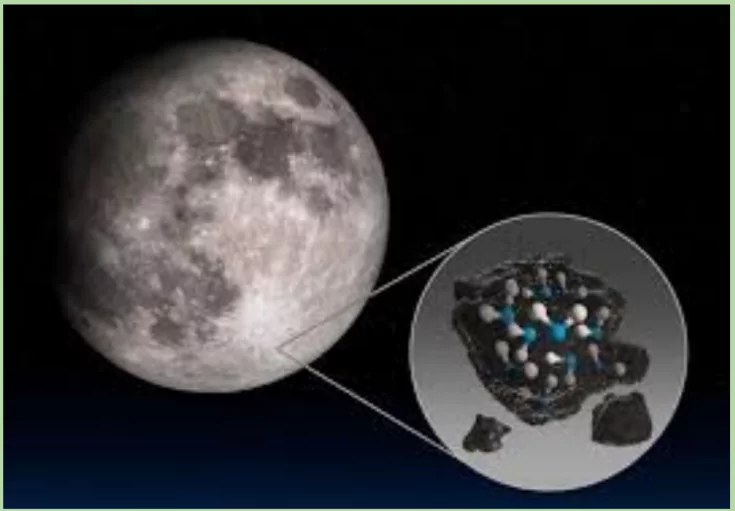A recent study found evidence of volcanic activity as recent as 120 million years ago.
New Discovery Reveals Ongoing Volcanic Activity on the Moon

- Previous Belief: Scientists believed the moon’s volcanic activity stopped about a billion years ago.
- Importance: The new discovery helps understand the moon’s surface, atmosphere, and tectonic activity.
Key Findings
- Study by Chinese Scientists:
Enroll now for UPSC Online Course
Chang’e-5 Mission
- Launch Date: 2020 (Nov)
- Part of Chang’e lunar exploration program.
- Objective: collecting samples from the surface of the moon for analysis.
- Focuses on studying geological features of the moon and its mineral composition.
- Landing: Successfully landed on Mons Rumker region.
- This region is a volcanic region in the Oceanus Procellarum (Ocean of Storms) on the moon’s near side.
|
-
- Researchers analyzed lunar glass beads from China’s Chang’e-5 mission.
- These beads are created by volcanic eruptions or impact events like asteroid strikes.
- The beads are spherical because it requires the least energy to form this shape, similar to water droplets in space or on Earth.
- Composition: These beads contain silicon, magnesium, and iron, with small amounts of potassium, titanium, and uranium.
- Glass Beads Analysis:
- The team studied 3,000 beads focused on their physical and chemical composition.
- They conducted sulfur isotope analysis to determine their origins.
- 3 samples were found to be from volcanic activity.
- Dating the Activity:
- Using uranium-lead radiometric dating method, the volcanic activity was dated to 116–135 million years ago.
- Significance of Sulphur:
Uranium-Lead (U-Pb) Dating
- U-Pb dating is a method to find the age of rocks.
- Is one of the oldest and most precise dating techniques.
- Age Range:
- Can date rocks that are between 1 million and over 4.5 billion years old.
- Provides accurate results within 0.1% to 1% precision.
- Main Material Used:
- Primarily uses zircon, which excludes lead during formation.
- New zircon crystals have no lead, so any lead found later comes from radioactive decay.
- How It Works:
- Measures the lead-to-uranium ratio in zircon to determine age.
- Since the decay rate of uranium to lead is known, this ratio helps determine the rock’s age.
|
-
- The use of sulphur isotope ratios was a new method to study volcanic activity, as sulphur is released during eruptions.
- This method is not commonly used in identifying materials from celestial bodies.
- Typically, scientists rely on carbon, oxygen, and lead analyses, but sulfur is more effective due to its release during volcanic activity as sulfur dioxide gas.
- Isotopes are atoms of the same element with different neutron counts.
- Analyzing isotope ratios helps determine the origin of the samples.
- The presence of elements like potassium and thorium in the beads suggests these minerals helped fuel volcanic eruptions.
Check Out UPSC Modules From PW Store
Lunar Glass Beads

- Lunar glass beads are tiny, round glass pieces found on the moon, created by volcanic eruptions or when asteroids hit the moon’s surface.
- Types
- Volcanic Beads: Form when lava from moon volcanoes cools quickly.
- Impact Beads: Form when rocks and soil melt from asteroid impacts, cool in the air, and turn into glass.
- Volcanic vs Impact Glass Beads
- Volcanic Beads: More uniform in appearance.
- Impact Beads: May have fractures or deformations caused by shock.
- They contain materials like silicon, magnesium, iron, and small amounts of elements like potassium and uranium.
- Volcanic beads may also have more sulfur, which comes from eruptions.
- Importance
- Moon’s History: Studying these beads helps scientists figure out when volcanoes or impacts happened on the moon.
- Lunar glass beads: It provides valuable information about the moon’s volcanic past, surface, and help guide future moon exploration efforts.
|
![]() 25 Sep 2024
25 Sep 2024

